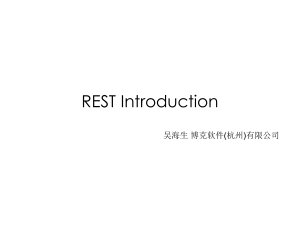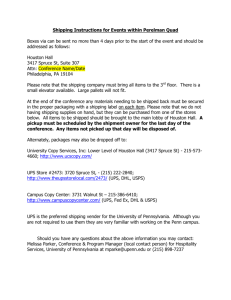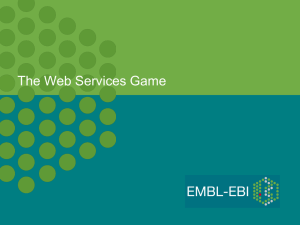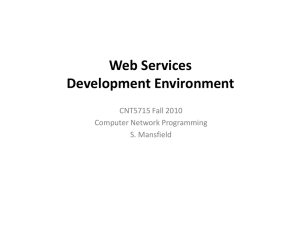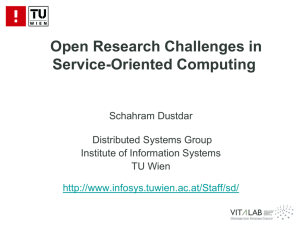Report - University at Buffalo, Computer Science and Engineering
advertisement
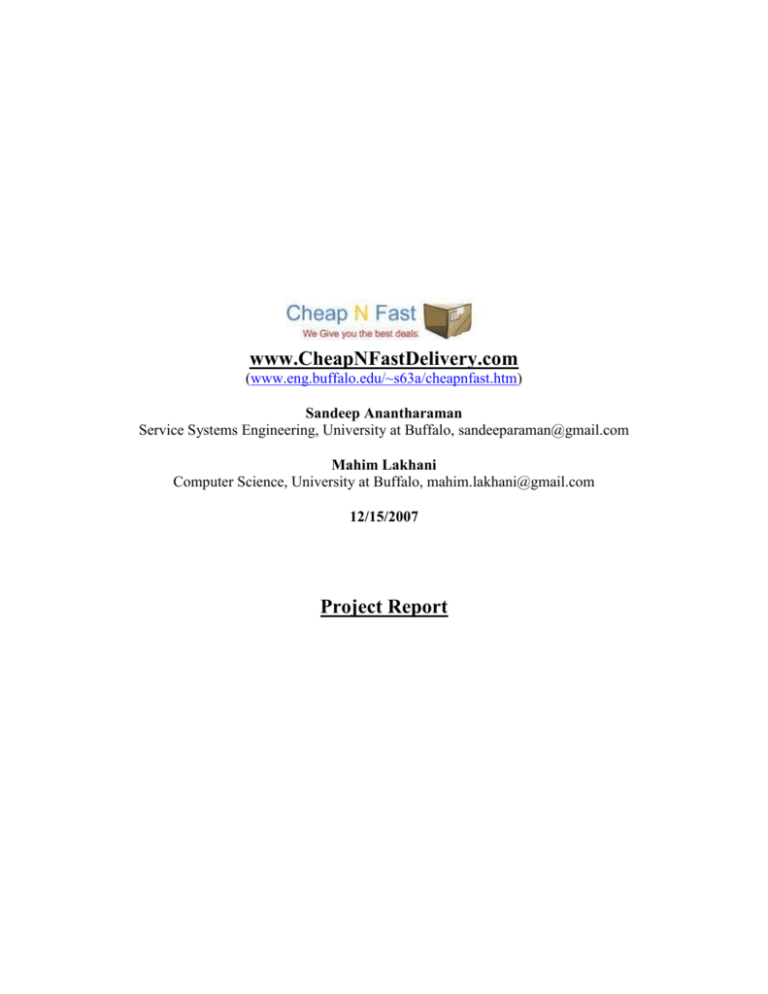
www.CheapNFastDelivery.com (www.eng.buffalo.edu/~s63a/cheapnfast.htm) Sandeep Anantharaman Service Systems Engineering, University at Buffalo, sandeeparaman@gmail.com Mahim Lakhani Computer Science, University at Buffalo, mahim.lakhani@gmail.com 12/15/2007 Project Report Table of Contents 1. Executive Summary ...................................................................................................... 3 2. Project Objectives ......................................................................................................... 3 3. Project Approach .......................................................................................................... 3 4. Project Design................................................................................................................ 4 4.1 Architecture............................................................................................................... 4 4.2 Architectural Model .................................................................................................. 6 4.3 SOA Architecture...................................................................................................... 7 5. Implementation Details ................................................................................................ 8 6. Integration of Services .................................................................................................. 9 7. Presentation Details .................................................................................................... 10 8. Conclusion ................................................................................................................... 10 9. References .................................................................................................................... 10 2 1. Executive Summary This web service will display the prices charged by UPS, FedEx and USPS for delivering a package from a source to a destination on a single web page. There are no websites on the internet that display the prices of the services offered by package delivery companies on a single page. A user has to go to each of their websites separately and check the rates of their services. This becomes tedious and some users may not check with all the sites. This may lead to a user paying a higher rate for the same service offered by another company for a lower price. If all the rates are fetched and displayed on a single web page, it will be easy for the user to compare the prices and choose a service which is cheaper and more suited to their needs. This application will help people who use these package delivery services and use the internet to check the prices of the services offered by various companies. This service will be implemented as a web service using the feeds from the three sites to be displayed on a single web page. The users of this system will be the people who use the internet and make use of the services offered by package delivery companies to send their packages. The users may be individuals, groups or companies. There are many websites on the internet which compare prices of flight tickets, books etc. but none providing this service for package delivery. This application will be of advantage to many users seeking such a service. 2. Project Objectives The web service will meet the following objectives: Provide data entry facility for inputs to the system. Fetch the data based on weight and dimensions of the package. Allow the user to enter the source and destination of the package. Display the prices of services offered by the three companies on the same page for the given source and destination. Provide a link to access the selected service directly from the results page. Display the contents of the webpage in a printable format if required by the user. 3. Project Approach We will develop this application making use of web services. Java will be the programming language used in development of this application. The features provided initially will be only price comparison of services offered by 3 major companies namely UPS, FedEx and USPS based on the weight, dimensions, source and destination of the package. Application will be modeled using client/server architecture. This project will be written as an internet enabled application. Testing will be done to test data integrity and proper working of the application. The client would be accessible all over the intranet. To access a client one would have to use the web browser and go to the website. 3 The service would be named as cheapandfastservice. Additional features will be added to the web service later. They include fetching prices of various other companies other than the major three, fetching prices of specialized articles delivery like automobiles, house movement etc. from the companies providing these services. The server used would be J2EE Application Server9. Netbeans would be used as the IDE for the development. The web service client would be a java servlet which would call the web service. The client would be deployed on both the server as well as on a different machine to ensure accessibility. Initially for the project the RSS data feeds and web services are being searched. After the data feeds and web services are found, we would start the coding for the project. The WSDL needed for the web services are provided by the FedEx, UPS and USPS on their respective websites. The server would be configured to handle a large number of simultaneous requests. But that again would depend on the use of the application. 4. Project Design 4.1 Architecture The architecture of the project is based on Process enabled SOA. The reason for choosing the architecture is as follows 1. Process Enabled SOA has light weight frontends, which generally should be the case while developing web applications. A simple front end ensures that complexity at front end is minimum, which should be the case for application specific services. 2. A Process Enabled SOA hides business complexities, which is going to be the case with the project since the business complexities are present inside server and handled by the client only by web services. Hence abstraction and encapsulation are also supported to a large extent. 3. Lastly, since the project uses web services from different organizations, using a Process Enabled SOA would ease out the difficulties that might arise due to the integration of independent services on one platform. 4 The detailed architecture diagram can be shown as Enterprise Layer Cheapandfa st website Business Layer search comp details Pastrec Intermediary Layer Search using size Search by cost Search by time taken Business Layer Customer details Letter details Parcel details Company Policies Figure 1.1 The various services provided by the application can be shown in this way. Every process in a layer refers to services in its immediate lower layer, hence doing proper justice with the Process Enabled SOA. 5 4.2 Architectural Model Customer Profile 1.getProfile() 2.updProfile() 3. getAllParcelDetails() 4. getTotalCosts(). Web Front End Customer Database Search Class 1. searchByCost() 2. searchBySize() 3. searchByTime() Invoke via WS Search Class 1. searchByCost() 2. searchBySize() 3. searchByTime() Provider’s Database containing the WSDL, XML etc. Figure 1.2 6 4.3 SOA Architecture WEB BROWSER SOAP BASED CONSUMER SOAP INTERNET JAVA EE 5 Container SOAP Services Integration Layer WSDL Services Implementation SEI PackageDeliveryService API FedEx API @WebService UPS API USPS API PackageDeliveryService XML Schema INTERNET FedfEx Web Services UPS Web Services USPS Web Services Figure 1.3 7 Figure 1.3 shows the SOA architecture of the PackageDeliveryService. The service runs inside the Java EE 5 container as shown in the above diagram. It serves two clients, the web browser and WSDL/SOAP based consumer. The WSDL/SOAP based consumer is some application that interprets the WSDL and communicates using SOAP. The PackageDelivery provides SOAP and WSDL web services to handle these consumers and at the same time the PackageDelivery also consumes the web services. A request to the PackageDelivery to search for the rates of a delivery service would be processed as follows. 1. If the request is sent from a WSDL/SOAP consumer, the search request is embedded in a SOAP message that is received at the URL where the PackageDelivery SOAP services have been deployed. 2. In the SOAP case, the appropriate SEI (service endpoint interface) method is invoked. The method chosen is the one that corresponds to the port and operation from the WSDL that is specified by the SOAP message. 3. The request message and the ultimate response are built from XML that corresponds to the standard XML schema mentioned in the diagram. 4. In the SEI deployment, the request message is serialized into Java objects that are bound to the standard XML schema. These objects are passed as parameters to the service implementation which in turn provides the web services functionality. Here, the service implementation interprets the search request and invokes the proper API methods to make the search happen. 5. The API provides a common wrapper around the source services. The PackageDelivery methods invoke the integration layer to translate the operations into the syntax and semantics of the source systems: FedEx, UPS and USPS. 5. Implementation Details 1. The project is going to one client known as the project client which would have the implementation of all the web services calls. 2. The client contains the WSDL of all the services in different packages. 3. After all the service WSDLs are added the client is going to compile and generate the class files in the directory build/WEB-INF/classes/ (package structure). 4. The front end of the application is a java servlet known as ProjectServlet.java. This java servlet would call all the methods that are needed to be called thru the web service in the client application. 5. The services are tested individually for each of the companies. As in FedEx, DHL, UPS and USPS are tested individually. 6. A JSP for each service is used to test the functionality and working of the service. 8 DHL Web Service Project Servlet FedEx Web Service Result JSP DHL Web Service UPS Web Service Figure 1.4 6. Integration of Services The service components are tested individually and once their individual functionalities are working properly, the services are integrated to provide all the services to the user on a single page. 1. A few web pages are designed to serve as the front end of the application. 2. The first page contains the input fields with which the user would like to query the service for desired results. 3. The fields will be the source, destination and weight of the package that the user would like to send. 4. Another JSP page will be used to display the results of the query. This will enable the user to compare the prices offered by various services for providing the same service. 5. The client calls the methods for FedEx, UPS, USPS and DHL for comparing the prices of shipment based on size, weight, source and destination addresses. 6. The client would then give the comparison of all the prices to the user. This comparison would be shown on the results JSP page. 9 7. Presentation Details The final presentation of the project will be done as per the following plan. 1. A power point presentation of around 20 slides will be presented. 2. The power point slides will contain the basic idea behind the project, advantages, problems faced during the implementation and the methods used to overcome these problems. 3. The design document of the project will then be presented to explain the basic architecture and other design details of the project. 4. The layer diagram, architecture model and architecture diagram will be very helpful in getting a good idea about the implementation. 5. The end result will be displayed based on the inputs from the audience. This will be verified by visiting the individual web sites. 6. The final stage of the presentation will consist of the explanation of the coding part. 7. Then we will be open to Q&A from the audience. 8. Conclusion The working model of the SOA was successfully demonstrated to an audience of 20 people. The service rates of three companies were displayed on the result screen for a normal package of 2 lbs from Buffalo to San Francisco. This search feature using the weight of the package has been implemented and this will be expanded to include the size of the package and other details. The web service will also be expanded to include customer profiles and various other features. 9. References Dr.Bina Ramamurthy, SUNY – Buffalo. SOA using JAVA Web Services by Mark D. Hansen Enterprise SOA : Service Oriented Architecture Best Practices by Krafzig, Banke and Slama. http://www.ecocoma.com/shipping_webservice.aspx www.fedex.com www.ups.com www.usps.com www.dhl.com 10


